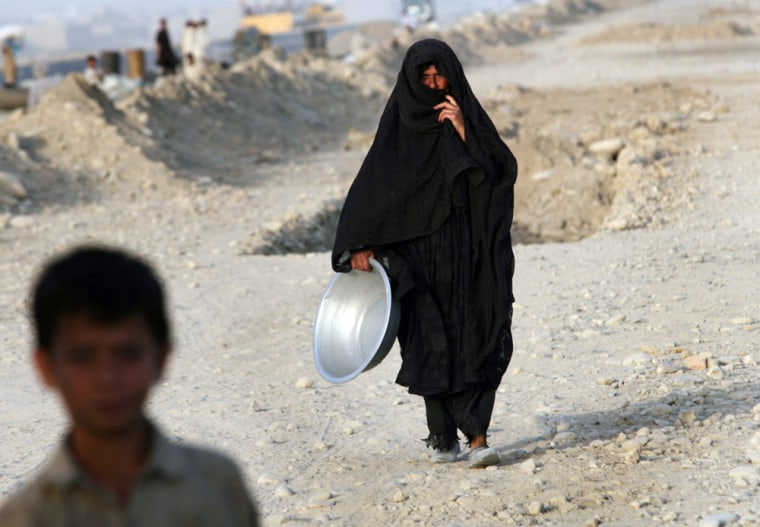Fighting in a volatile southern province killed 22 suspected Taliban militants, officials said Wednesday, as the top European envoy in Afghanistan warned that a new NATO mission to pacify and help rebuild the region must not fail.
Taliban fighters have stepped up attacks this year, triggering the worst violence since the hard-line regime's ouster in late 2001 for hosting Osama bin Laden. The bloodshed has raised new fears for Afghanistan's fragile democracy.
The latest clashes, involving Afghan and U.S.-led coalition troops and air power, took place on Tuesday and Wednesday in two districts of Helmand province, also the hub of Afghanistan's huge trade in opium and heroin.
Militants attacked a coalition patrol with machine guns and rocket-propelled grenades in Garmser district on Tuesday, but suffered seven dead, a coalition statement said.
Upsurge in violence
On Wednesday, another five militants were killed and 11 wounded in a battle in Garmser with 200 Afghan police, said Ghulan Rasool, a district police chief.
And in Musa Qala district on Tuesday night 10 more militants were killed and 15 wounded by coalition and Afghan forces backed by air strikes, said Ghulam Nabi Nalakhail, Helmand's chief of police.
No security forces were hurt in any of the violence, official said.
The recent upsurge in violence has come as about 8,000 NATO forces have deployed in the south, mostly British, Canadians and Dutch, as part of the alliance's expansion across Afghanistan. It also has troops in Kabul and the north and west of the country.
On Wednesday, NATO nations in Brussels gave formal approval for the move into the southern provinces. NATO will take over command of the region from the U.S.-led anti-terror coalition early next week.
Francesc Vendrell, special EU representative for Afghanistan, said there would be 18,000 NATO troops nationwide, along with a similar number of U.S. forces — the biggest foreign military presence in the post-Taliban period.
"We are not going to tolerate any haven for terrorist elements in Afghanistan," Vendrell told a news conference in Kabul. "We will stay as long as it takes to get this issue solved."
Vendrell, however, said the NATO mission would have been easier had the forces deployed three or four years previously — before the
‘Not simply a matter of al-Qaida’
Taliban were able to regroup and local disenchantment over official corruption and continuing poverty had set in.
He also said that the U.S.-led war on terror launched in Afghanistan in 2001 — after the Sept. 11 attacks on America — had been too focused on al-Qaida.
"I think perhaps they were too single-minded on one objective without seeing the broader picture, perhaps not realizing that it was not simply a matter of al-Qaida that had produced the Taliban," he said.
Vendrell said dealing with the south required not only military action, but efforts to improve governance — amid involvement of corrupt police and officials in the region's booming drugs trade — and development.
Western officials say that militants in the south are a complex if loose alliance of hardcore Taliban, drug gangs and Pashtun villagers who are paid to fight against Afghan and foreign forces. Afghanistan produces about 90 percent of the world's opium, and much of it is grown and processed into heroin in the southern provinces.
Bloodshed continues
In the weeks preceding the coalition's handover to NATO, more than 10,000 U.S.-led troops have fanned out across southern Afghanistan, killing more than 600 suspected Taliban militants since June 10, according to the coalition.
At least 19 coalition soldiers have also been killed in the same period, according to an Associated Press count based on coalition information.
Meanwhile, police on Wednesday were questioning four Afghans about the fatal shooting of a Canadian reconstruction worker, identified as Mike Frastacky, who was found dead in northern Baghlan province on Monday. Gen. Eawaz Khan, the provincial police chief, said there were no clear murder suspects or motives.
In western Ghor province, police arrested a suspected Taliban cleric, Mullah Ahmed Shah, as a suspect in the Monday killing of an Afghan doctor and a driver for the international aid agency, World Vision, said provincial police chief Shah Jahan Noori. The aid workers were killed after they had made a medicine delivery.
